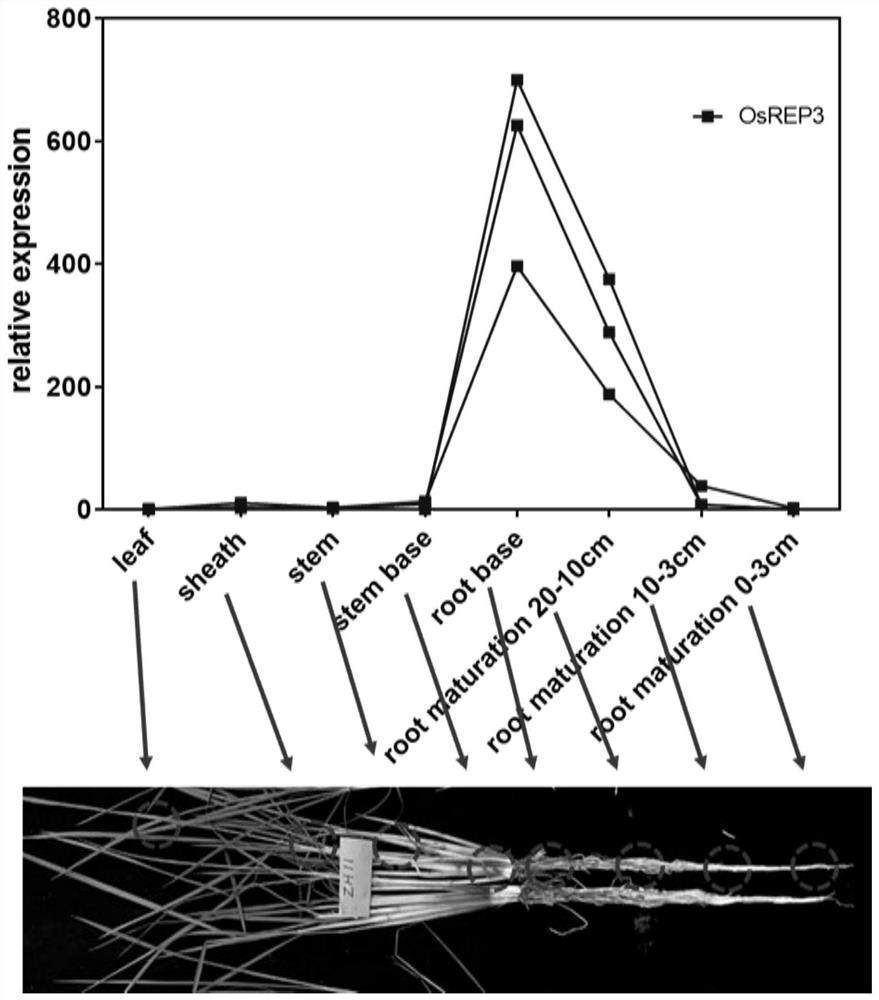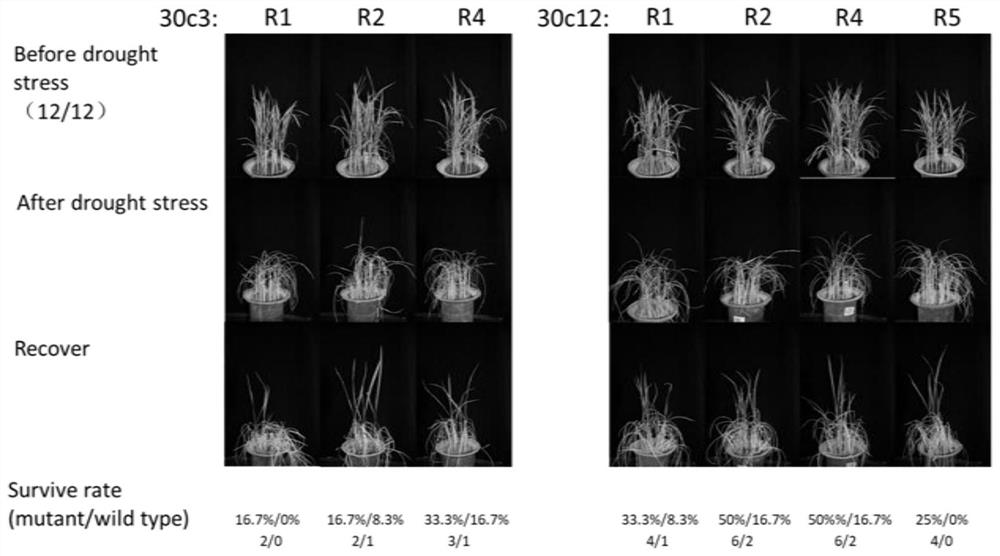Application of OsREP3 gene in controlling drought resistance of rice
A drought resistance, rice technology, applied in the fields of application, genetic engineering, plant genetic improvement, etc., can solve the problem of difficulty in researching the contribution of drought avoidance, and achieve the effect of enhancing the ability to tolerate drought stress.
- Summary
- Abstract
- Description
- Claims
- Application Information
AI Technical Summary
Problems solved by technology
Method used
Image
Examples
Embodiment 1
[0025] Example 1: Acquisition of target gene OsREP3
[0026] The applicant conducted a genome-wide association analysis of 529 core germplasm materials under normal conditions at maturity and root traits after drought stress, and located a gene that controls the maximum root length (MRLN) under normal conditions at maturity on chromosome 4. locus, within 200KB of this locus, most genes are annotated as transposons and retrotransposons in the rice genome annotation website TIGR (http: / / rice.plantbiology.msu.edu / ), Only a few genes were annotated as hypothetical or expressed proteins. These expressed proteins were analyzed in the expression profile database RiceXPRO (http: / / ricexpro.dna.affrc.go.jp / ), and it was found that one gene had strong root-specific expression characteristics. Therefore, we took this gene as our candidate gene for candidate research, which was named OsREP3. OsREP3 is functionally annotated as expressionprotein on the rice genome annotation website TIG R...
Embodiment 2
[0027] Example 2: Detection of the expression level of rice endogenous OsREP4 gene
[0028] The tissue expression profile of OsREP3 was detected by real-time fluorescence quantitative PCR ( figure 1 ). Specifically: the applicant selected the japonica rice variety "Zhonghua 11" (abbreviated as ZH11, a commercial variety from the Crop Research Institute of the Chinese Academy of Agricultural Sciences) as the material for expression profile analysis. The RNA samples of representative tissue materials in the tillering stage were taken, and the total RNA was extracted with TRIZOL reagent (purchased from Invitrogen Company). Transcribe and synthesize cDNA (method according to the instructions of Invitrogen reverse transcriptase reagent), and the reaction conditions are: 65°C for 5 minutes, 50°C for 60 minutes, and 70°C for 10 minutes. Taking the cDNA synthesized by the above reverse transcription as a template, the OsREP3 gene was amplified by specific PCR with primers (OsREP3Rea...
Embodiment 3
[0031] Example 3: Construction of OsREP3 gene knockout vector
[0032] Construction of CRISPR Knockout Vectors:
[0033] The applicant knocked out the OsREP3 gene in rice. The relevant CRISPR knockout vector construction methods are as follows:
[0034] The CRISPR knockout vector used was pRGEB32 (Xie, 2015, Boosting CRISPR / Cas9 multiplexediting capability with the endogenous tRNA-processing system). The gRNA was designed according to the method used in the literature and its secondary structure was predicted on the corresponding website. 2 targets were designed in the CDS region ( Image 6 ), the target sites selected in the CRISPR-P v2.0 website are as follows:
[0035] Target site 1: TCTCATCCTCGCAATGGTCA
[0036] Target site 2: CCGGGGAGTGGCCATGACAT.
[0037] The two gRNAs were ligated together overnight by T7 ligase, and 1 ul of the ligation product was taken and carried out with universal primers at both ends (S5A D5-F: 5'-CGGGTCTCAGGCAGGATGGGCAGTCTGGGCA-3' and S5AD5-...
PUM
 Login to View More
Login to View More Abstract
Description
Claims
Application Information
 Login to View More
Login to View More - R&D
- Intellectual Property
- Life Sciences
- Materials
- Tech Scout
- Unparalleled Data Quality
- Higher Quality Content
- 60% Fewer Hallucinations
Browse by: Latest US Patents, China's latest patents, Technical Efficacy Thesaurus, Application Domain, Technology Topic, Popular Technical Reports.
© 2025 PatSnap. All rights reserved.Legal|Privacy policy|Modern Slavery Act Transparency Statement|Sitemap|About US| Contact US: help@patsnap.com



